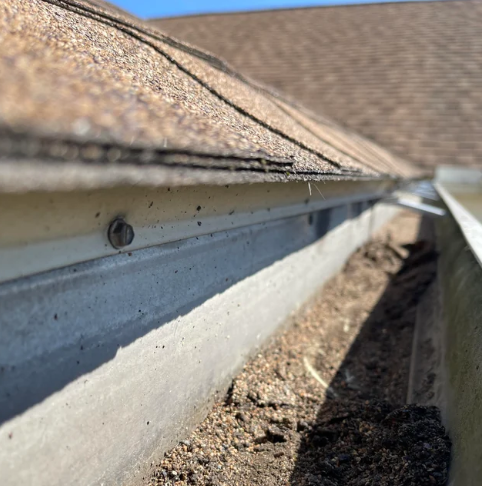A roof is a critical component of any structure, providing shelter and protection against the elements. Over time, however, roofs undergo wear and tear due to exposure to weather conditions, UV radiation, and other environmental factors.
This raises an important question for homeowners and property managers alike: How often should roofs be replaced?
To know more let’s delve into the factors that influence roof lifespan, signs that indicate the need for replacement, and proactive measures to extend the life of your roof.
Roof Lifespan
The frequency at which roofs should be replaced depends on various factors, including the type of roofing material, local climate conditions, and maintenance practices.
In general, asphalt shingle roofs may need replacement every 20-30 years, while metal or tile roofs can last longer, up to 50 years or more.
Regular inspections, prompt repairs, and proactive maintenance can extend the lifespan of a roof. It is advisable to consult with roofing professionals to assess the specific needs of your roof and determine the most appropriate replacement timeline for optimal performance and protection.
Signs That Indicate The Need For A Roof Replacement
A sturdy and reliable roof is crucial for protecting your home from the elements, maintaining structural integrity, and ensuring safety. Over time, however, even the most well-constructed roofs can wear down due to various factors leading to the need for a timely replacement. Let us look into the key signs that indicate your roof may be in need of replacement. Recognizing these signs at the earliest will save you from potential structural damage or costly repairs down the line.
1. Age of the Roof
One of the primary indicators that it might be time for a roof replacement is its age. The lifespan of most roofing materials ranges between 20 to 30 years, depending on the type of material used. As a roof approaches the end of its lifespan, it becomes more susceptible to deterioration, leaks, and other issues. Regular inspections and awareness of your roof’s installation date are crucial in determining if it’s time for a replacement.
2. Visible Exterior Damage
Examining the exterior of your roof for visible signs of damage is an essential step in assessing its overall condition. Look for cracked, curled, or missing shingles, as these can leave your roof vulnerable to leaks. Damaged flashing, which seals joints and edges of the roof, is another red flag that may require immediate attention. Additionally, granule loss on asphalt shingles is an indication of wear and tear, signaling the need for a closer inspection.
3. Sagging or Uneven Roof Surface
A sagging or uneven roof surface is a serious structural issue that demands immediate attention. This can be caused by various factors, including water damage, rotting roof deck, or compromised support structures. If you notice any dips or sags on your roof, it is crucial to consult with a professional roofing contractor to assess the extent of the damage and determine whether a replacement is necessary.
4. Persistent Leaks and Water Damage
Leaky roofs can cause significant damage to your home’s interior, leading to mold growth, damaged insulation, and compromised structural integrity. If you notice water stains on your ceilings or walls, it’s essential to address the issue promptly. While some leaks can be repaired, persistent or widespread leaks may indicate a more profound problem, necessitating a roof replacement to ensure long-term protection.
5. Mold and Mildew Growth
The presence of mold and mildew on your roof or in your attic is a clear sign of moisture infiltration. Mold can thrive in damp environments, and a compromised roof provides an ideal breeding ground. Not only can mold growth pose health risks to occupants, but it also accelerates the deterioration of roofing materials. If you observe any mold or mildew, it’s crucial to investigate the root cause and consider a roof replacement if the issue persists.
6. Algae or Moss Growth
While algae or moss growth on your roof might seem like a cosmetic issue, it can have long-term consequences for the health of your roof. These organisms can trap moisture, leading to the deterioration of shingles and accelerating the aging process. Regular cleaning and maintenance can help mitigate algae and moss growth, but if the problem persists, it may be an indication that your roof is no longer structurally sound.
7. Excessive Granule Loss
Asphalt shingles are coated with granules that protect them from the sun’s UV rays and enhance their durability. Over time, these granules may wear off, especially in older roofs. Check your gutters and downspouts for an accumulation of granules, as excessive loss can compromise the effectiveness of the shingles. If you notice a significant amount of granules, it may be a sign that your roof is nearing the end of its lifespan and requires replacement.
8. Energy Efficiency Decline
An often overlooked sign of a failing roof is a decline in energy efficiency. A compromised roof may allow heat or cold air to escape from your home, leading to increased energy bills. If you notice a sudden spike in your heating or cooling costs, it’s worth investigating whether your roof is adequately insulating your home. Upgrading to a new, energy-efficient roof can not only enhance comfort but also contribute to long-term cost savings.
9. Roof Deck Issues
The roof deck, or the layer of sheathing that provides the foundation for roofing materials, plays a crucial role in the overall stability of your roof. If you observe signs of rot, decay, or sagging in the roof deck, it indicates a severe problem that requires immediate attention. Roof deck issues can compromise the structural integrity of the entire roofing system, necessitating a replacement to ensure the safety of your home.
10. Granule Accumulation in Gutters
Regularly cleaning your gutters is an essential part of roof maintenance. During this process, take note of the debris collected in the gutters, particularly the accumulation of granules. If you find an excessive amount of granules, it may be a clear indication that your shingles are deteriorating. This loss of protective granules can make your roof more vulnerable to damage from external elements, prompting the need for a thorough inspection and potential replacement.
11. Visible Daylight in the Attic
A quick inspection of your attic during daylight hours can reveal significant information about the condition of your roof. If you notice beams of light coming through the roof boards or visible holes, it suggests that your roof is no longer providing adequate protection. Such openings allow water, pests, and debris to enter your home, posing a threat to both the structural integrity and the comfort of your living space.
12. Recent Severe Weather Events
Extreme weather conditions, such as hailstorms, hurricanes, or heavy snowfall, can cause significant damage to your roof. Even if the damage appears minimal from the ground, it’s essential to conduct a thorough inspection after severe weather events. High winds, hail, and debris can compromise the integrity of roofing materials, leading to hidden issues that may not be immediately apparent. Promptly addressing storm-related damage can prevent further deterioration and extend the lifespan of your roof.
Conclusion
In conclusion, the frequency of roof replacement depends on various factors, including materials, environmental conditions, and proactive maintenance efforts. Regular inspections, prompt repairs, and strategic investments in professional services can significantly extend the lifespan of your roof.
To sum it up it is always good to be informed and take proactive measures ensuring that the roofs provide reliable protection for many years to come.





